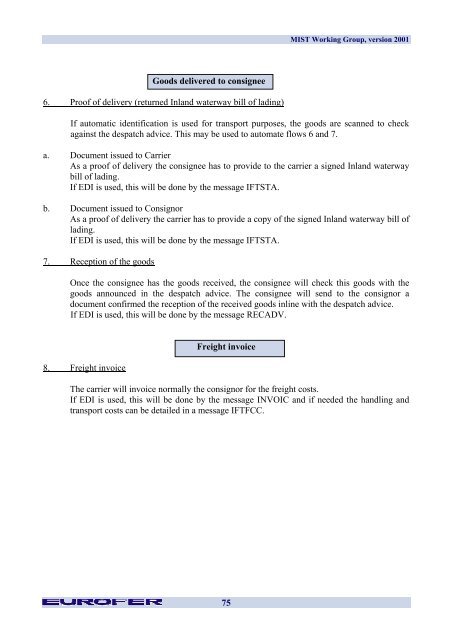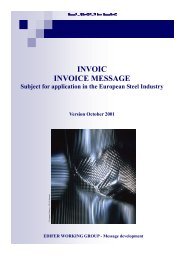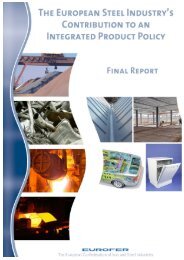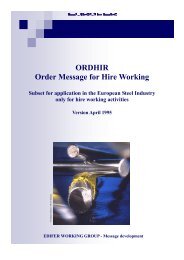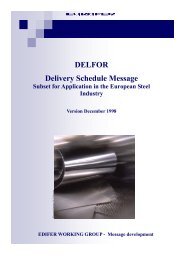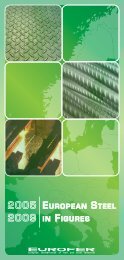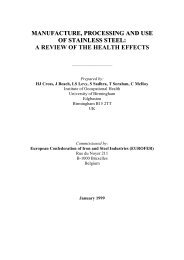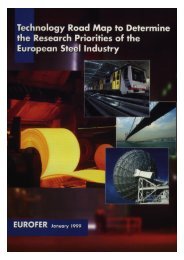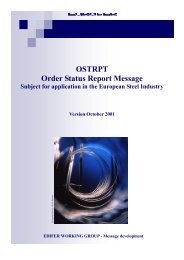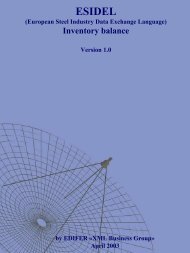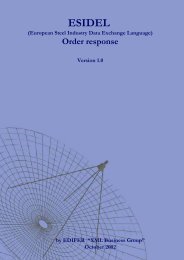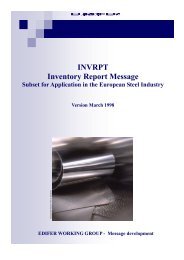Multi Industry Scenarios for Transport - Eurofer
Multi Industry Scenarios for Transport - Eurofer
Multi Industry Scenarios for Transport - Eurofer
You also want an ePaper? Increase the reach of your titles
YUMPU automatically turns print PDFs into web optimized ePapers that Google loves.
Goods delivered to consignee<br />
6. Proof of delivery (returned Inland waterway bill of lading)<br />
75<br />
MIST Working Group, version 2001<br />
If automatic identification is used <strong>for</strong> transport purposes, the goods are scanned to check<br />
against the despatch advice. This may be used to automate flows 6 and 7.<br />
a. Document issued to Carrier<br />
As a proof of delivery the consignee has to provide to the carrier a signed Inland waterway<br />
bill of lading.<br />
If EDI is used, this will be done by the message IFTSTA.<br />
b. Document issued to Consignor<br />
As a proof of delivery the carrier has to provide a copy of the signed Inland waterway bill of<br />
lading.<br />
If EDI is used, this will be done by the message IFTSTA.<br />
7. Reception of the goods<br />
Once the consignee has the goods received, the consignee will check this goods with the<br />
goods announced in the despatch advice. The consignee will send to the consignor a<br />
document confirmed the reception of the received goods inline with the despatch advice.<br />
If EDI is used, this will be done by the message RECADV.<br />
8. Freight invoice<br />
Freight invoice<br />
The carrier will invoice normally the consignor <strong>for</strong> the freight costs.<br />
If EDI is used, this will be done by the message INVOIC and if needed the handling and<br />
transport costs can be detailed in a message IFTFCC.


